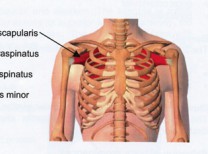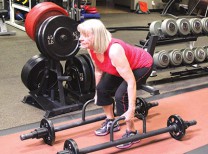In today’s fast-paced, technology-driven world, many of us spend long hours at computers, often sacrificing our well-being for the demands of our jobs. However, neglecting our physical health can have serious consequences, leading to discomfort, pain and injury.
Cervicogenic headaches, neck pain, thoracic pain, low back pain and carpal tunnel syndrome are common work-related injuries that impair productivity and quality of life. Sitting for extended periods of time, coupled with poor posture and inadequate understanding of biomechanics, can lead to aches and pain, which if left unaddressed can become severe.
Unraveling the mystery of sitting pain. It’s crucial to comprehend why sitting can become painful over time. The weight of gravity, muscle strain and poor circulation can contribute to discomfort and pain. However, the primary culprit is often poor posture and a lack of understanding about proper body mechanics. Ignoring these fundamentals can result in long-term damage to our musculoskeletal system.
The dangers of “text neck.” One prevalent consequence of poor posture is the development of upper cross syndrome, commonly known as text neck. This condition is characterized by weak neck flexors, tight pectoral muscle, and weak rhomboids and serratus anterior. Text neck can lead to spinal wear-and-tear, degeneration and even the need for surgical intervention. Maintaining a neutral spinal alignment is vital in preventing such issues.
Essential tips for proper sitting posture. Adopting and maintaining proper sitting posture is crucial. Here are some guidelines:
- Use a proper ergonomic desk chair that can be adjusted to your body.
- Distribute your weight evenly on your buttocks.
- Sit with your buttocks all the way back in the chair and lean your back against the backrest.
- Ensure your spine is in a neutral alignment.
- Feet should rest on the ground or on a supported surface.
- Draw your shoulder blades down and back.
- Tuck your chin, aligning your forehead and chin, so you are looking at the top line of the computer (the www line).
- Make sure the arms are adequately supported by armrests.
- The hands on the keyboard or mouse should be at the same horizontal level as the elbows.
The power of taking breaks. Incorporating regular breaks into your work routine make a significant difference. Recommended standing break times are 2.5 minutes for every 30 minutes of sitting or 5 minutes for every 60 minutes. For short breaks, go to the bathroom, grab a healthy bite to eat in the break room, drink water. For longer breaks, take a walk, visit the gym or climb stairs.
Embracing workplace wellness involves a holistic approach to maintaining a healthy work environment by consistently practicing good posture, having an ergonomically suited workstation, and incorporating exercise and frequent breaks to alleviate strain and promote circulation. If after taking these steps, the pain persists for more than a week, hampers daily activities or causes numbness or tingling in the upper or lower extremities, consider consulting a physical therapist. In California, direct access to physical therapy is available without a referral from a medical doctor.
Prioritizing workplace wellness is essential for maintaining a healthy, productive workforce. By understanding the impact of work-related injuries, adopting proper posture, taking regular breaks and seeking professional help when needed, we can prevent pain injury and foster a positive work environment. Remember, a healthy body leads to a healthier work-life balance and ultimately benefits both individuals and organizations alike.
Luke Gentry is a doctor of physical therapy with Movement for Life and can be reached at (760) 347.6195 (Indio) or (760) 202.0368 (Cathedral City). www.movementforlife.com/desert.















































Comments (0)